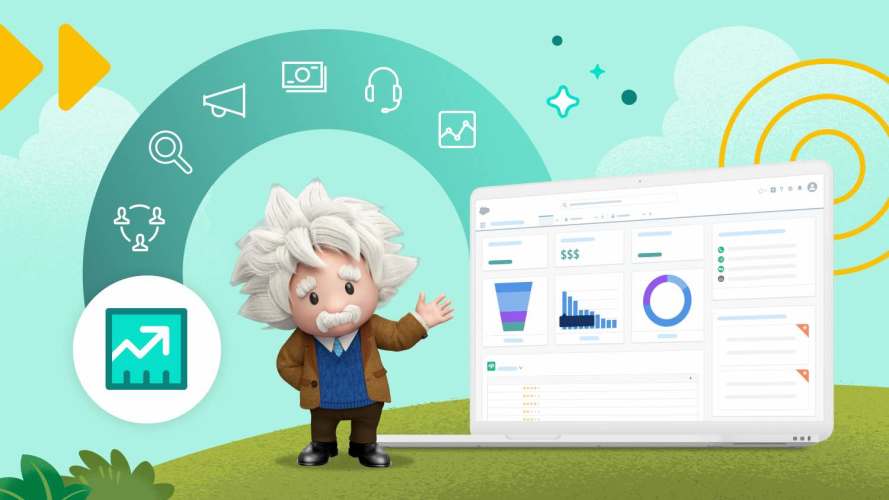Understand Your Customers Better With an Industry Segmentation Strategy



Salesforce's Senior Vice President of Industries, Neeracha Taychakhoonavudh, discusses how to understand customers better with an industry segmentation strategy.

Liz Shivvers
Neeracha Taychakhoonavudh, Senior Vice President of Industries at Salesforce, has been blazing her own trail as a widely known technology executive and innovator. She sets Salesforce strategy and go-to-market initiatives across industries. She’s also responsible for curating an ecosystem of partner solutions and accelerators to amplify Salesforce’s industry market success. We sat down with her to learn how her team is leveraging an industry segmentation strategy to better understand customer needs and enable customer success.
Q: Why is Salesforce pursuing an industry market segmentation strategy? What is that exactly and how does it differ from other common market segmentation schemes?
A: In general, market segmentation is the process of parsing potential customers into groups, based on characteristics like shared interests, needs, or locations. You can approach market segmentation in a bunch of different ways, and here at Salesforce, we actually use multiple segmentation strategies concurrently. We segment our customers by geography, company size, business role, and industry.
We’ve been selling into industries for quite a few years, but once we started going deep, it became clear that doubling down efforts in our most important segments would allow us to understand customer needs a lot better and tailor our solutions to the unique challenges that different industries are wrestling with. It’s an important lever for growth as our company becomes more mature.
Q: Your team develops Salesforce’s business strategy for our target industry markets. Can you explain what that entails?

A: First off, everyone on our industry team is a subject matter expert with a background working in a particular industry — healthcare, manufacturing, etc. They spend a lot of time looking at, say, the challenges facing healthcare insurers and what Salesforce can bring to the table to help those organizations succeed. Our team’s job is to develop a particular point of view that answers this question: How can Salesforce uniquely help solve the common challenges and disruptive factors that we’re seeing happen in each industry?
Once we identify that point of view, we create a business strategy around it. There are a few tools we use to do that. The first is called an industry blueprint. This is an asset that shows the value chain of an industry’s key customer-facing processes and capabilities — it’s a visual map of what organizations in that field do. We then look at the blueprint and determine the major areas where Salesforce can help. Is it customer acquisition? Is it care and service? Is it onboarding? Answering these questions helps us figure out where in the process Salesforce can best add value. We then layer in Salesforce’s solutions onto these industry blueprints.
The next step is to create a product roadmap for these industry-specific solutions. As part of that, we do an evaluation to decide whether to build, buy, or partner with a vendor to develop these new offerings. For example, if you look at our retail solution, we made the decision to partner with independent software vendor SessionM to provide loyalty intelligence capabilities.
Once we have our blueprint and product roadmap, we create sales plays that enable our salespeople to share our point of view and explain our solutions to the industry.
Last but not least, we turn those sales plays into marketing campaigns promoting our solutions, which are then executed in each of our regions.
This approach gives us a really focused and tightly integrated strategy that allows us all to execute in a very aligned manner.
Q: What fascinates you most about your current role?

A: This role has made me realize that while each industry is in a different stage of the technology adoption maturity cycle and getting disrupted in different ways, there are also common pain points that everyone is feeling.
For example, no matter what industry you’re in, there’s the imperative to know your end customer better. For industries like retail or healthcare, that’s always been the case. You want to understand the customer or the patient. But we’re seeing traditional B2B customers, like manufacturers accustomed to working through suppliers and distribution channels, who now need to differentiate on more than just product. They need to differentiate themselves by product, service, and overall experience, regardless of how the customer bought their product. They too need to be customer-centric. This requires them to understand the entire lifecycle throughout the ecosystem to deliver a frictionless experience for their customer. Every single industry is grappling with this challenge, just slightly differently.
Q: Customer success is one of Salesforce’s core values. In your current role, how do you ensure that the company’s industry go-to-market strategies are customer-centric?
A: What we’re doing with the industry team now is understanding the challenges and desired outcomes at an industry-by-industry level and building products customized to solve those specific needs. Our Financial Services Cloud is a great example of this. It comes prebuilt with a data model for householding, which is a big deal in financial services. The customer does not have to go figure out how to add special objects to the standard Salesforce data model to customize it for their needs. The fact that we have the knowledge and the capabilities to create industry-specific products means we’re much more aligned to what our customers are looking for and better able to help them succeed.
Q: What advice would you give to companies considering a strategic shift to targeting industry markets?
A: My advice would be this: industry market targeting makes perfect sense at a certain state of maturity and growth in a company’s customer base. And it’s critical to take a data-driven approach to identify which industries you will target.
At Salesforce, we analyzed our customer base by industry and pulled together the total addressable market for each industry. This market analysis helped us define which industries we should specialize in and which solutions to bring to market for each industry.
Q: Bonus round: What have you read, listened to, or watched recently that inspired an “Aha!” moment — in work, life, or both?
A: I was in a Salesforce leadership training program last year and one of the speakers that joined us was Brene Brown, a researcher and author who has one of the most popular TED talks in existence. She spoke to us about vulnerability and the value of creating psychological safety for our teams. The data around this is very clear. If teams feel safe and they have a trusting relationship with each other, they aren’t afraid to bring up new ideas, to surface new insights. It results in more creative and resilient teams.
That terminology is kind of a weird one — psychological safety. But it sparked an “Aha!” moment for me. As a leader who constantly thinks about how I can help teams excel, I’ve always thought about it in terms of team dynamics, bonding, trust, and community — what we often refer to here at Salesforce as Ohana. But, until then, I hadn’t thought about how actively fostering a sense of safety is actually a prerequisite for building trust. If you haven’t heard Brene Brown’s TED talk, definitely check it out.
























